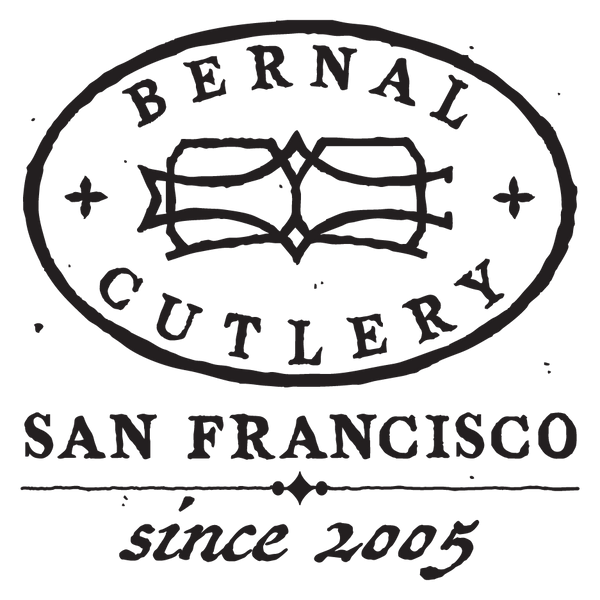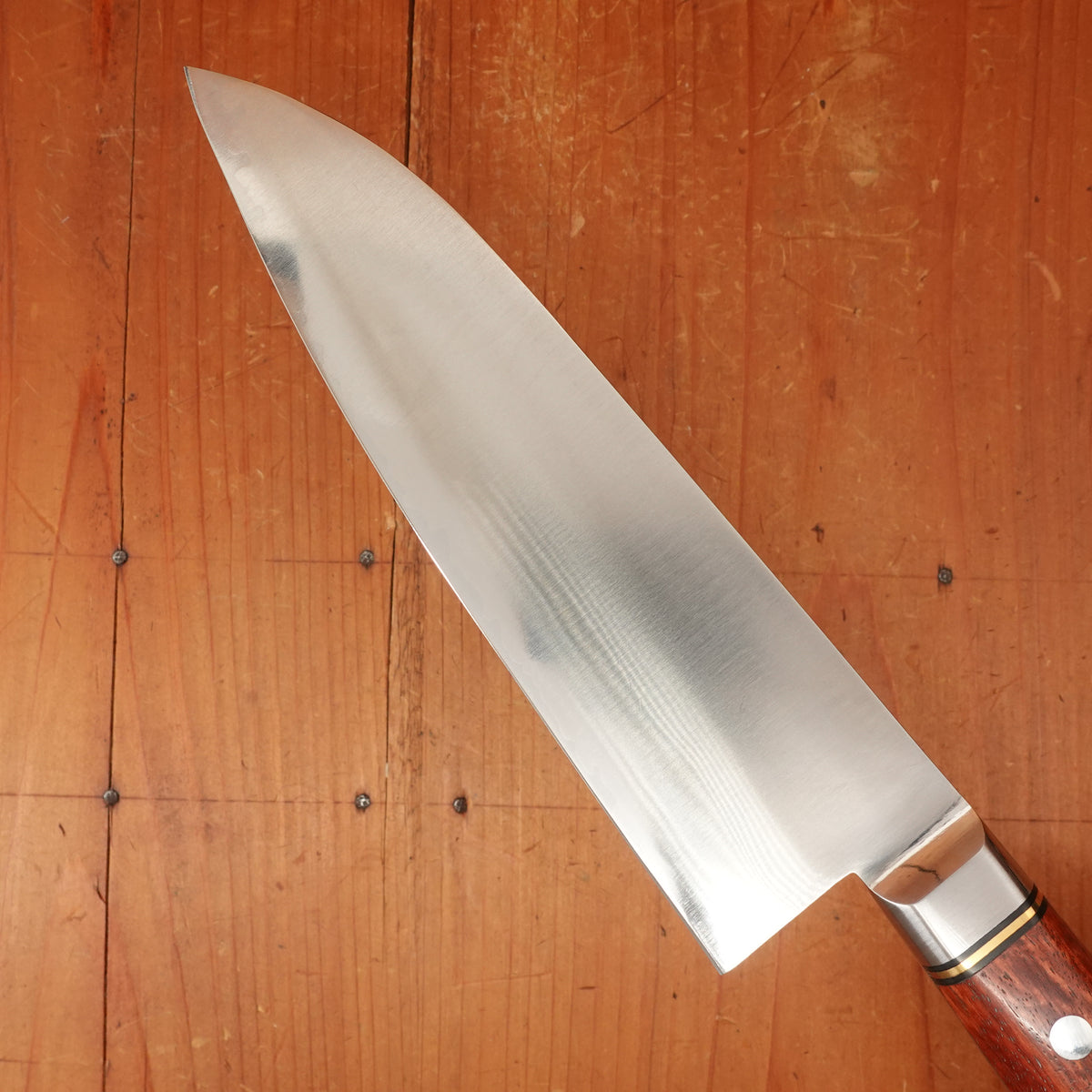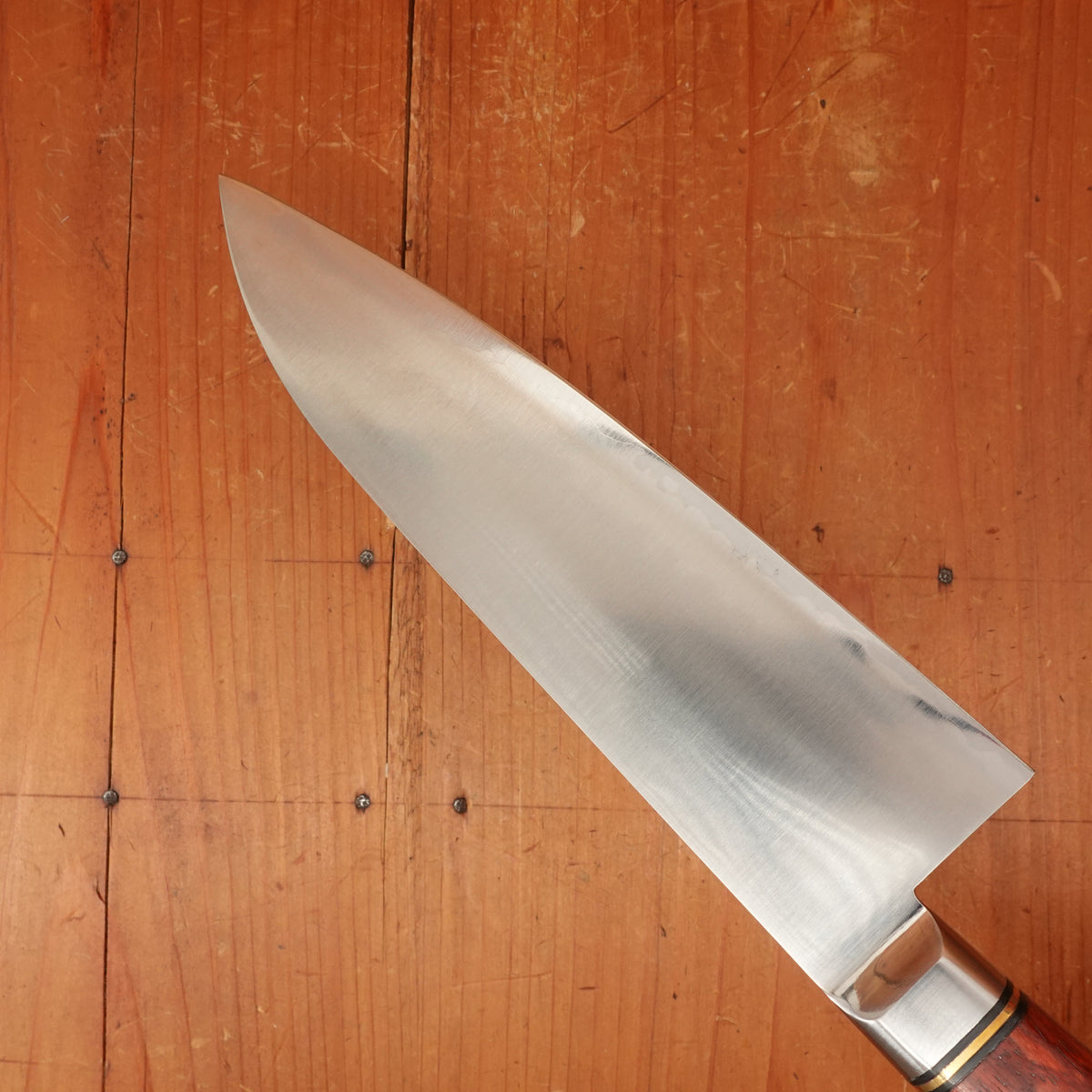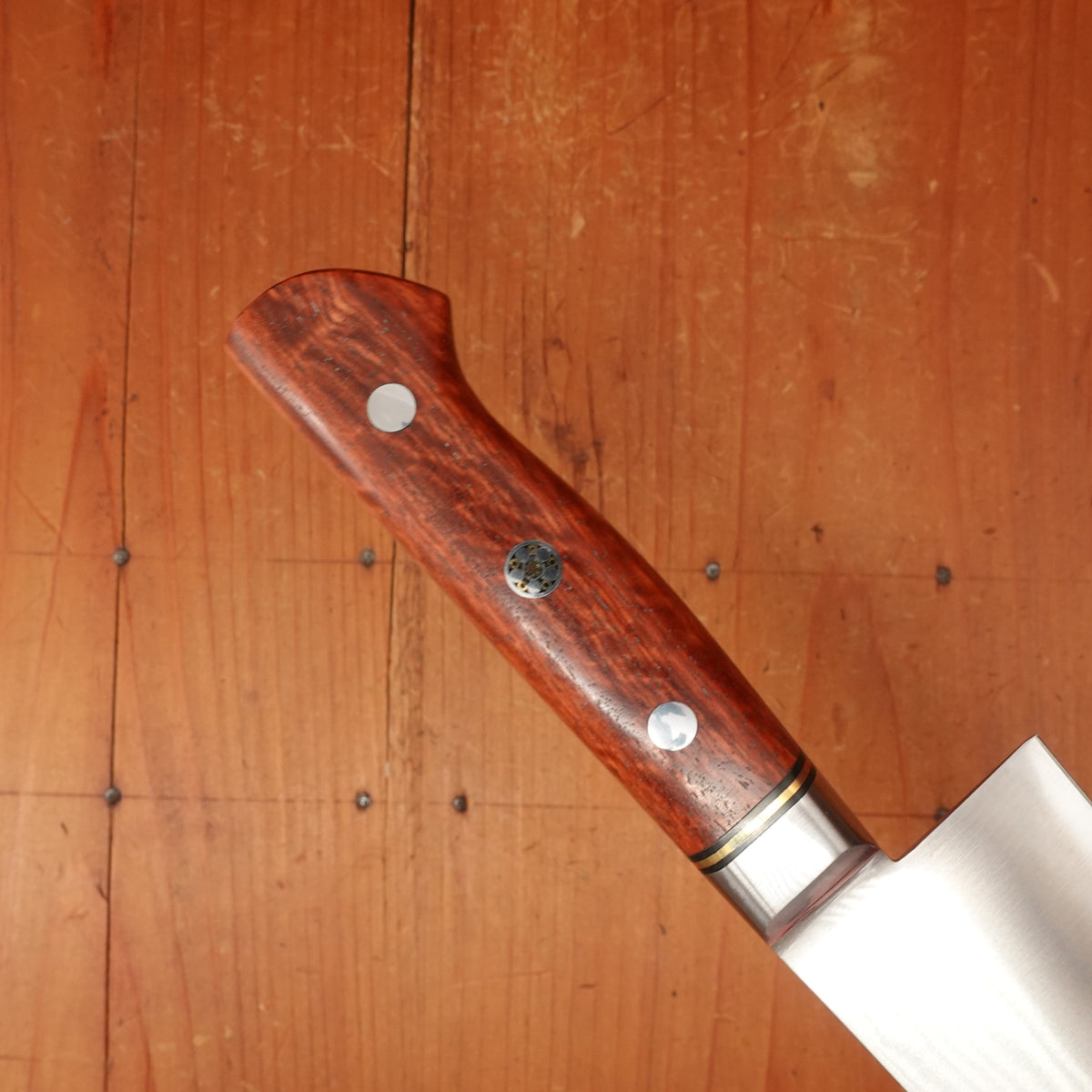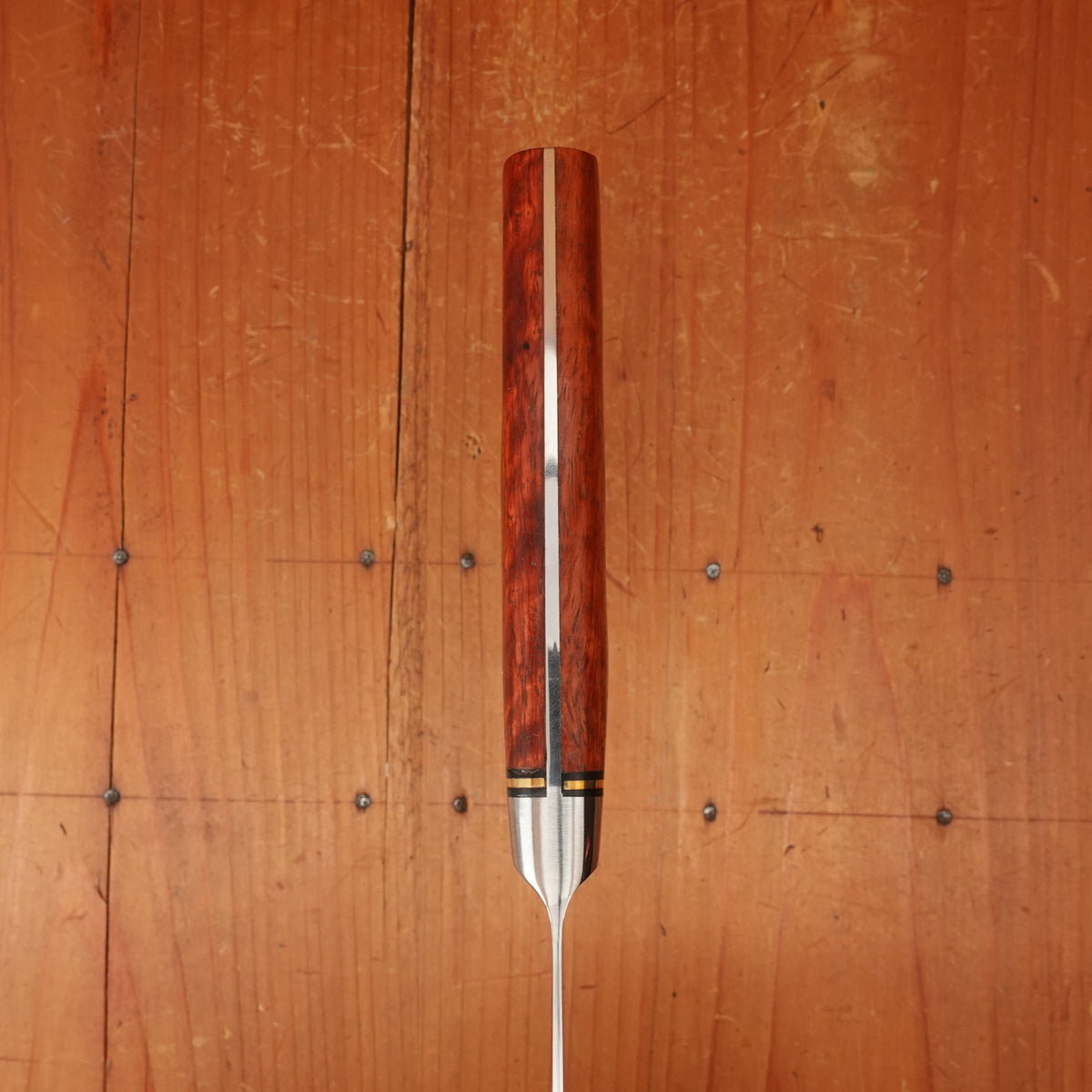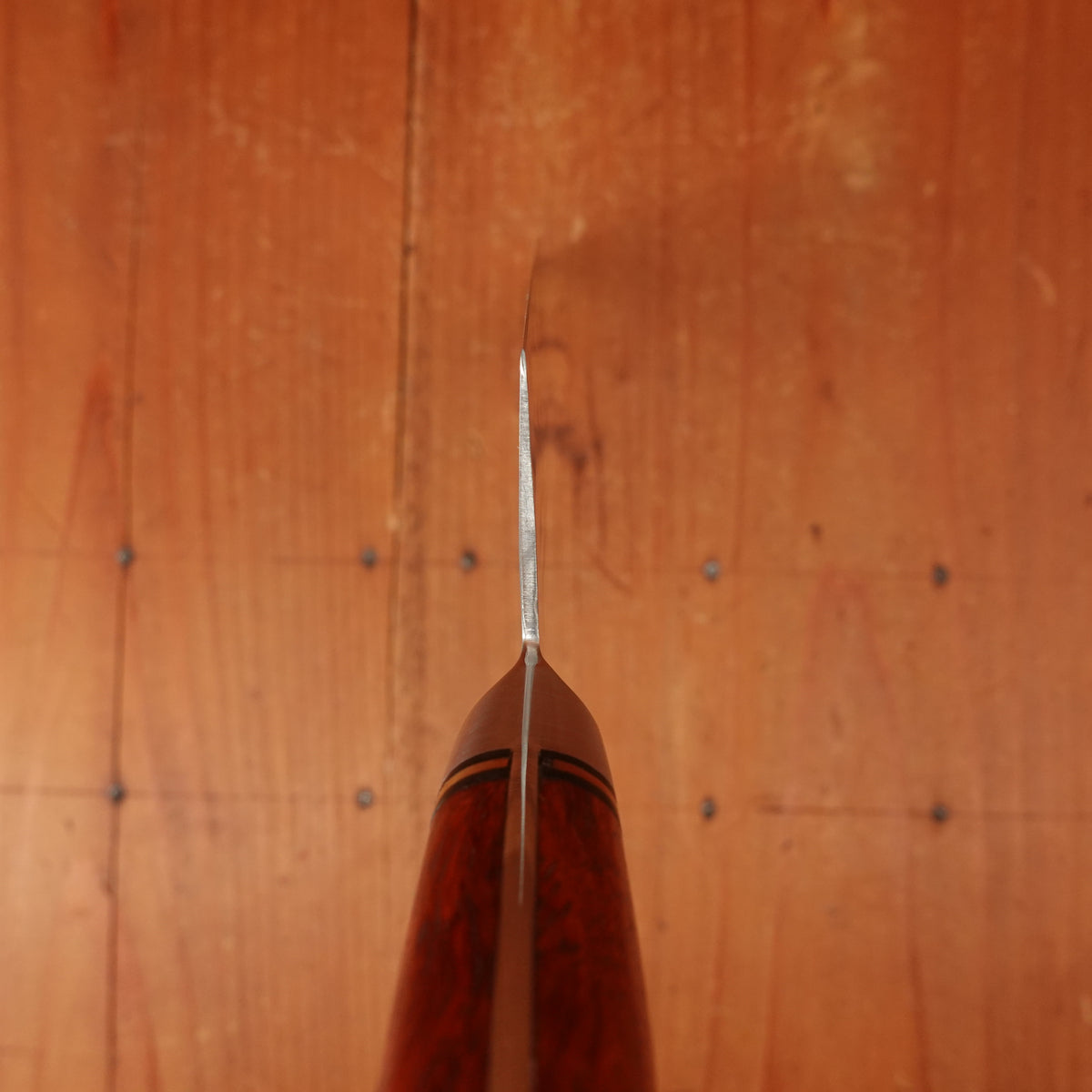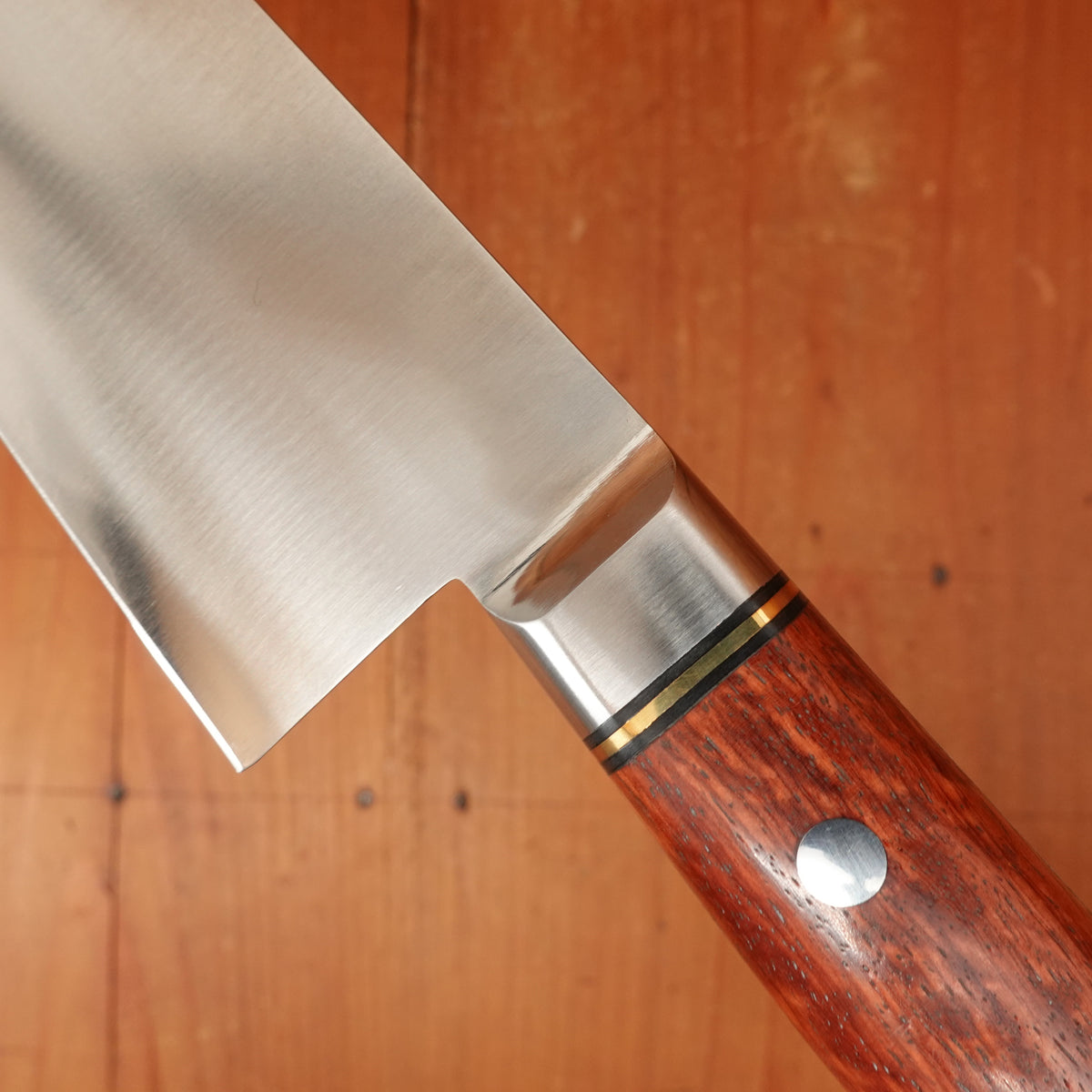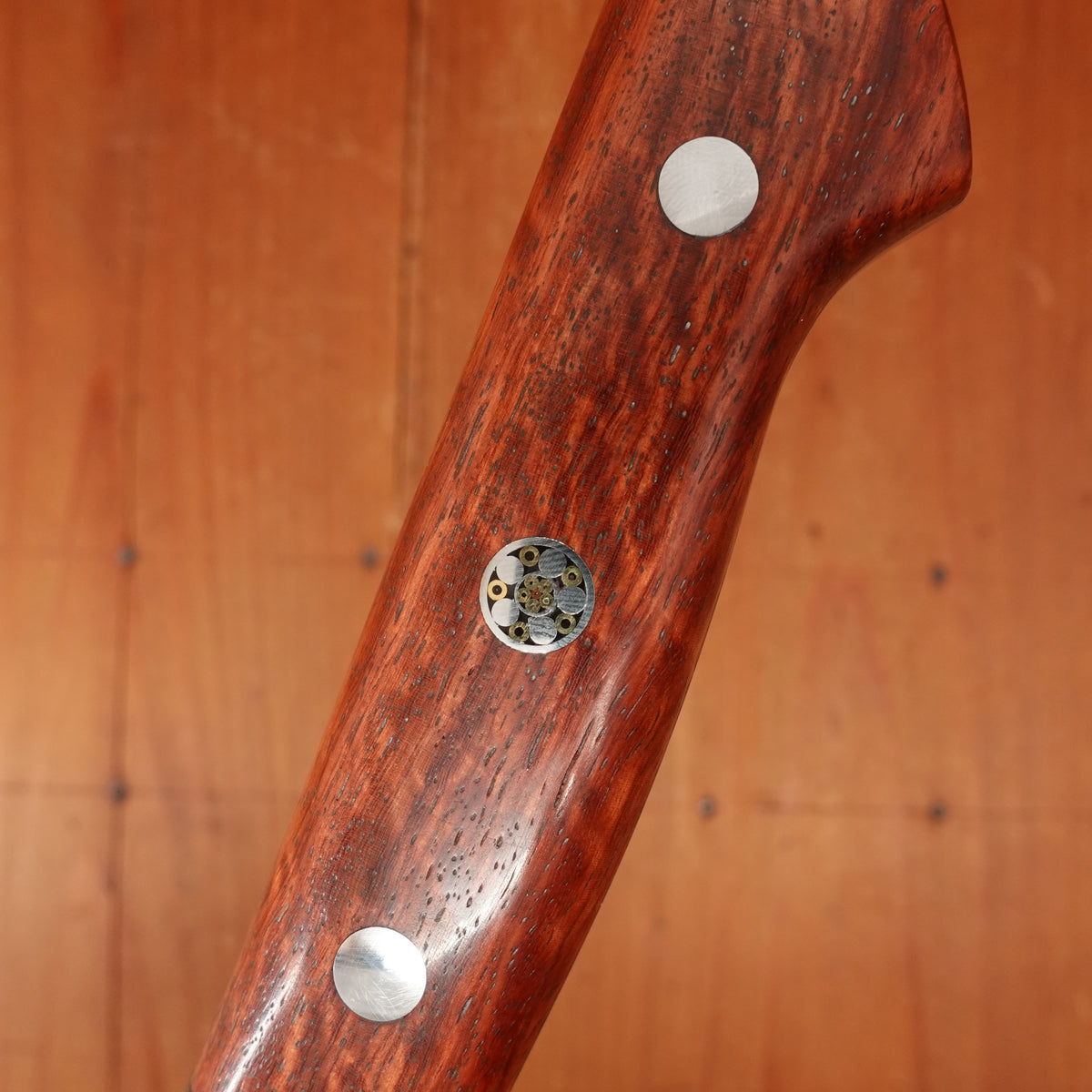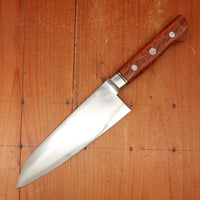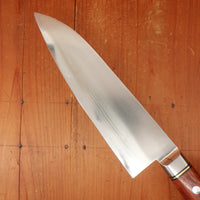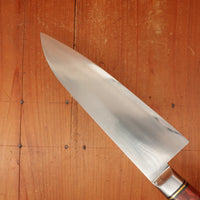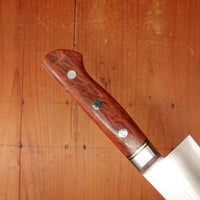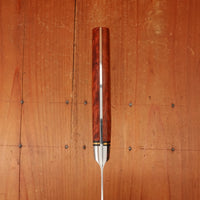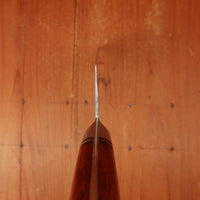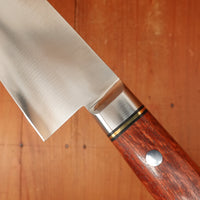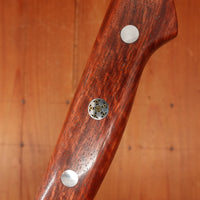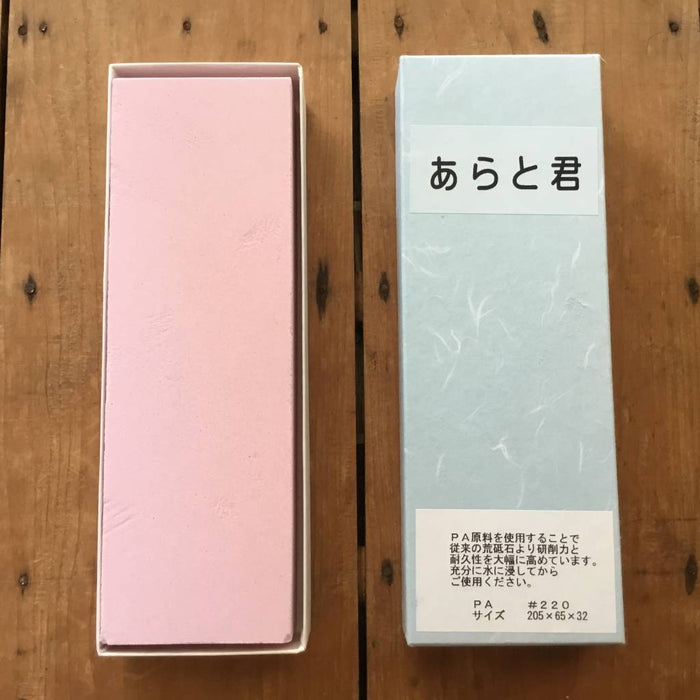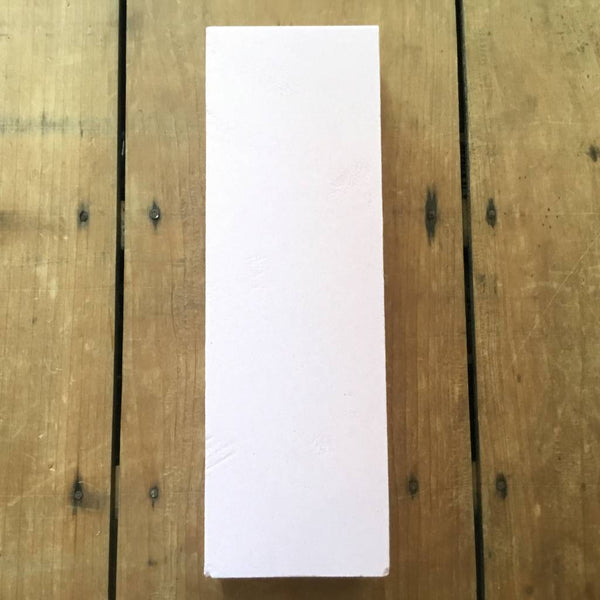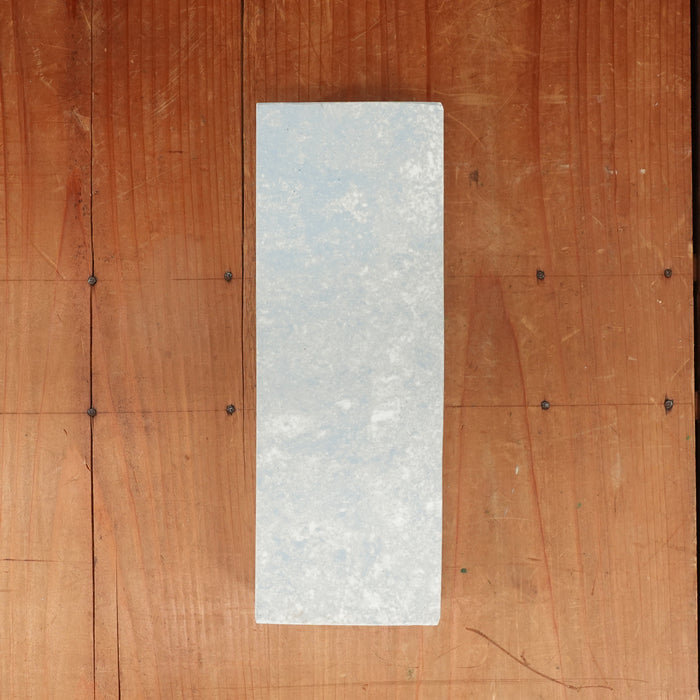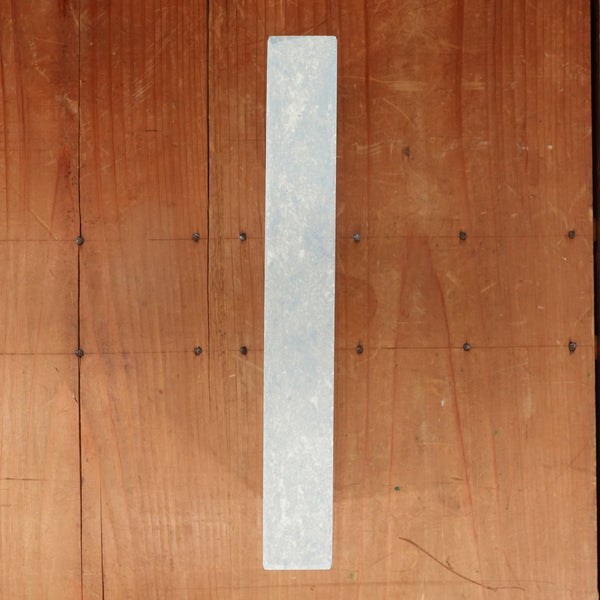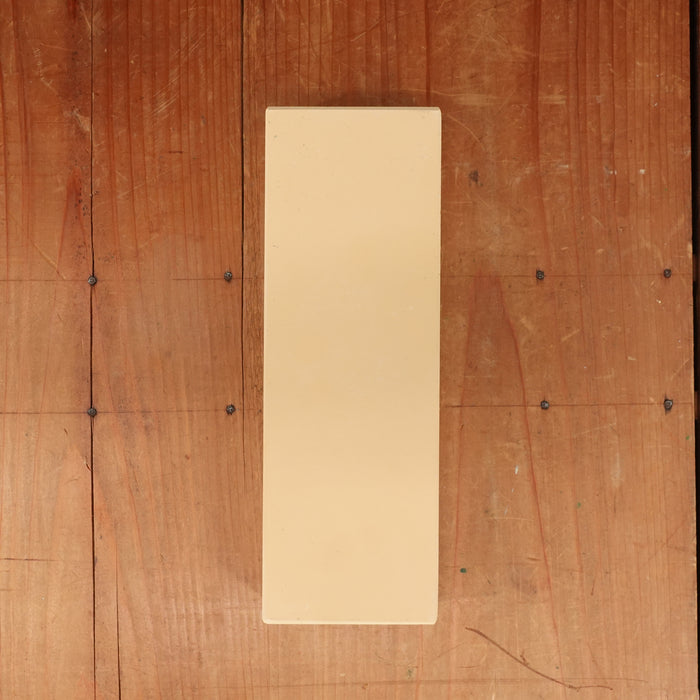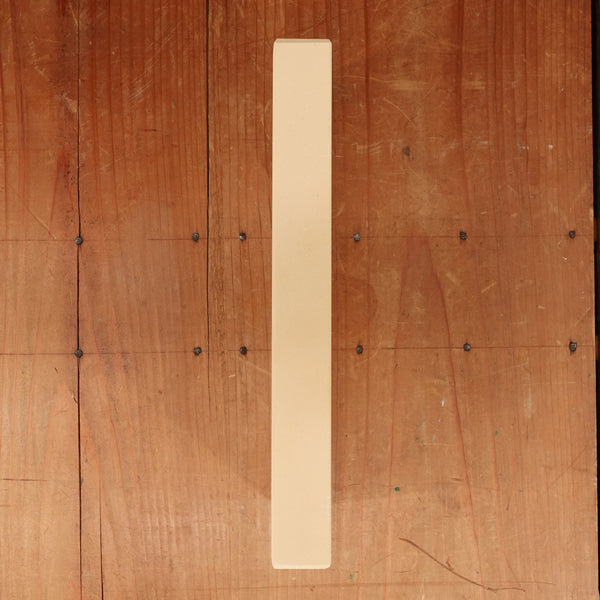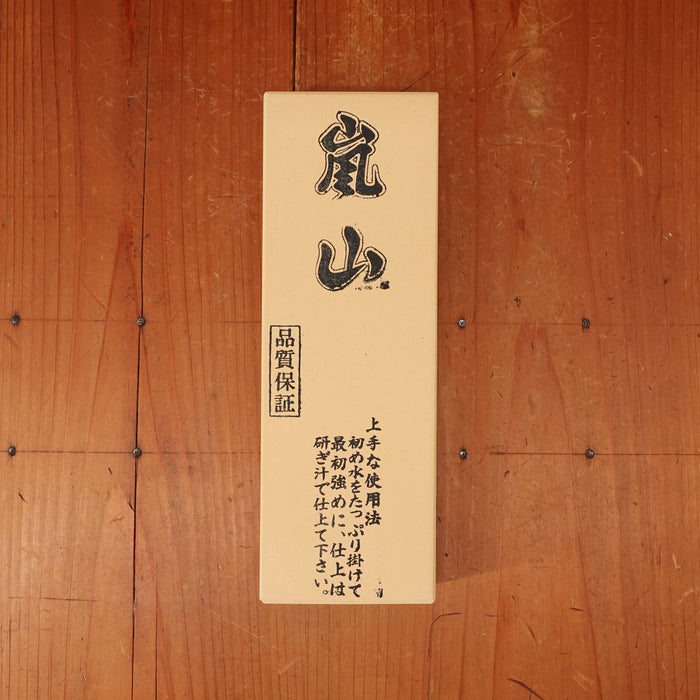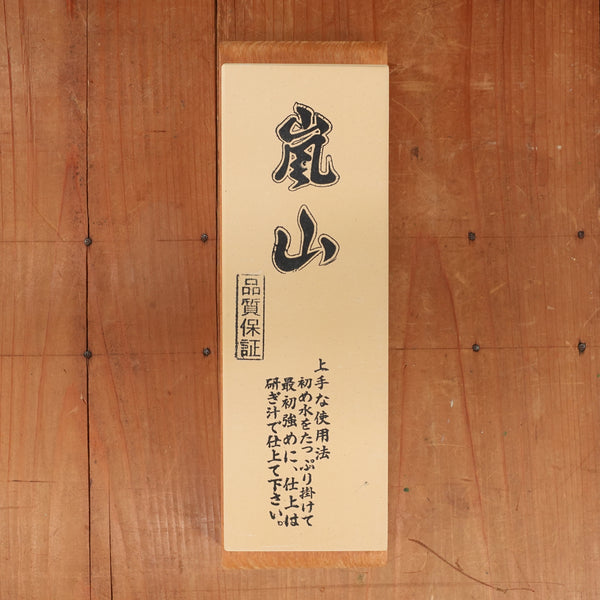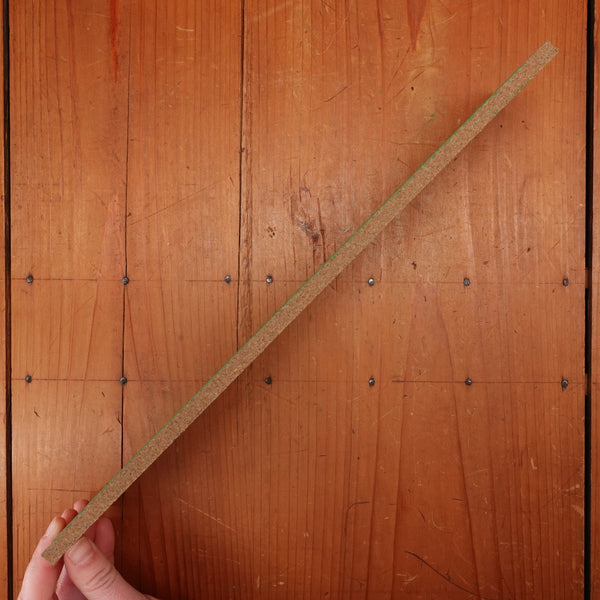New Old Stock Hiro 180mm Santoku Stainless Clad Aogami 2 Quince Western Handle
-
Regular Price
-
$287.00
-
Sale Price
-
$287.00
-
Regular Price
-
Sold Out
-
Unit Price
- per
- Regular Price
- $287.00
- Sale Price
- $287.00
- Regular Price
- Unit Price
- per
Made by Hiro in Seki Japan with stainless clad aogami 2 western handled blades with quince, mosaic pin and black and copper spacers.
We were able to get decent information on these, it seems these were dead stock somewhat recently handled with older stock blades.
Blades are hand ground thin with a convex face, there is a smoothed spine and semi smoothed heel, handles have nice fit ups. Some blades need a little straightening but none are badly off.
This is a stainless clad reactive carbon steel. It should be mentioned that extra care is required, as only the cladding of the blade is stainless and should be dried immediately after use. The core will develop a dark patina with usage, but any orange rust should be removed with a light abrasive.
About This Knife



Listed Length: 180mm
Total Length:
Edge Length:
Heel Height:
Spine Thickness:
Weight:
Orientation: Right-hand Bias
Blade Type: Stainless Clad Carbon Steel
Steel Type: Aogami 2 (Blue Paper #2)
Steel Hardness (HRC):
Maintenance: Some Attention
Handle Type: Western
Handle Material: Quince
Dive Deeper
Medium-fine finish
Sharpening Supplies
Stones & Accessories selected specifically for this knife.
Arato-kun #220 Extra Coarse Grit Whetstone
- Regular Price
- $34.00
- Sale Price
- $34.00
- Regular Price
-
- Unit Price
- per
Bernal Cutlery Takarazukushi 1200 Grit Blue Marble Semi-Soft Ceramic Japanese Whetstone
- Regular Price
- $74.00
- Sale Price
- $74.00
- Regular Price
-
- Unit Price
- per
Bernal Cutlery Takarazukushi 4000 Grit Yellow Semi-Hard Resinoid Japanese Whetstone
- Regular Price
- $82.00
- Sale Price
- $82.00
- Regular Price
-
- Unit Price
- per
Arashiyama #6000 Whetstone Stone NO Wooden Base
- Regular Price
- $58.00
- Sale Price
- $58.00
- Regular Price
-
- Unit Price
- per
Arashiyama #6000 Whetstone With Nagura Stone and Wooden Base
- Regular Price
- $62.00
- Sale Price
- $62.00
- Regular Price
-
- Unit Price
- per
Bernal Cutlery Monodiachrome™ Precharged Deburring Strop
- Regular Price
- $40.00
- Sale Price
- $40.00
- Regular Price
-
- Unit Price
- per
Aogami 2 (Blue Paper #2)
About Hiro
Seki, Gifu, Japan
